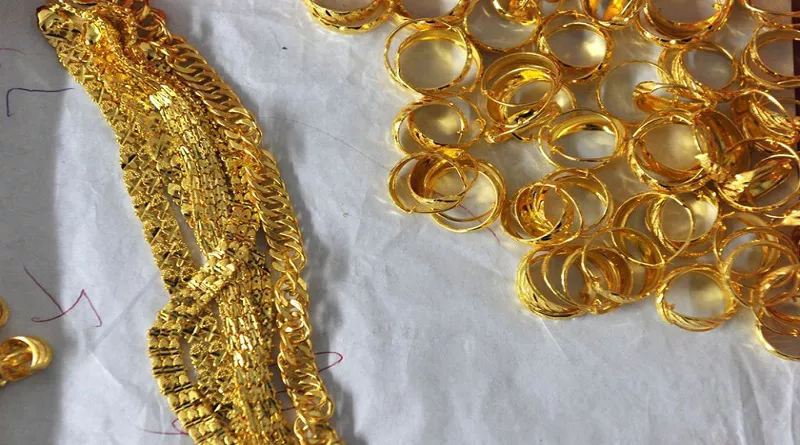Gold jewelry is a timeless adornment cherished for its beauty, durability, and intrinsic value. However, when selecting gold jewelry, one of the critical decisions to make is choosing the appropriate carat. Carat, not to be confused with karat (the measure of gold purity), refers to the proportion of pure gold in an alloy. In this article, we will explore the different carats of gold used in jewelry and discuss which carat is best suited for various preferences and purposes.
Understanding Gold Purity and Carats
Before delving into the best carat for jewelry, it’s essential to understand gold purity and how it relates to carats. Pure gold, also known as 24 karat (24K) gold, is too soft and malleable for most jewelry applications. Therefore, it is alloyed with other metals to improve its strength and durability. The carat system is used to denote the proportion of pure gold in an alloy, with 24K representing 100% pure gold.
Common Carats Used in Jewelry
Gold jewelry is typically crafted in various carats to suit different preferences and price points. The most common carats used in jewelry include:
24K Gold: As mentioned earlier, 24K gold is pure gold, making it the highest carat available. While 24K gold is prized for its purity, it is too soft for everyday wear and is primarily used for investment purposes or in some cultural jewelry traditions.
22K Gold: With a gold content of 91.7%, 22K gold is a popular choice for traditional and ceremonial jewelry in many cultures. While slightly less pure than 24K gold, 22K gold offers a good balance of purity and durability.
18K Gold: Considered the standard for fine jewelry, 18K gold contains 75% pure gold, making it durable enough for everyday wear while still retaining a significant gold content. Jewelry crafted in 18K gold strikes a balance between luxury and practicality.
14K Gold: Widely used in the United States, 14K gold contains 58.5% pure gold, with the remaining percentage consisting of alloyed metals. Jewelry made from 14K gold is durable, affordable, and suitable for everyday wear.
10K Gold: With a gold content of 41.7%, 10K gold is the lowest carat commonly used in jewelry. While it offers excellent durability and affordability, some consumers may prefer higher carats for their jewelry pieces.
Factors to Consider When Choosing Carat
Selecting the best carat for your jewelry depends on several factors, including:
Durability: Higher carat gold alloys tend to be softer and more prone to scratching or bending. If durability is a primary concern, opting for a lower carat gold alloy, such as 18K or 14K, may be preferable for everyday wear.
Color Preference: The color of gold alloys can vary depending on the metals used in the alloy. Higher carat gold alloys often have a richer, deeper color due to their higher gold content, while lower carat alloys may appear lighter or slightly less yellow.
Budget: Carat can also impact the price of jewelry, with higher carat gold alloys typically commanding higher prices due to their higher gold content. Consider your budget when selecting the appropriate carat for your jewelry purchase.
Allergy Sensitivity: Some individuals may be sensitive to certain metals used in gold alloys, such as nickel or copper. Opting for higher carat gold alloys or hypoallergenic metals like platinum or palladium may help alleviate allergy concerns.
The Best Carat for Different Types of Jewelry
While there is no one-size-fits-all answer to the best carat for jewelry, certain carats may be more suitable for specific types of jewelry:
Engagement Rings: For engagement rings that will be worn daily and subjected to regular wear and tear, 14K or 18K gold is often recommended for its durability and longevity.
Wedding Bands: Similar to engagement rings, wedding bands should be crafted from durable gold alloys like 14K or 18K to withstand daily wear over a lifetime.
Special Occasion Jewelry: For special occasion jewelry pieces that are worn less frequently, such as statement necklaces or cocktail rings, higher carat gold alloys like 22K or 24K may be preferred for their luxurious appearance.
Everyday Jewelry: Jewelry intended for everyday wear, such as earrings or bracelets, should strike a balance between durability and affordability. 14K or 18K gold alloys are well-suited for everyday jewelry pieces.
Conclusion
In conclusion, the best carat for jewelry depends on various factors, including durability, color preference, budget, and intended use. While higher carat gold alloys offer greater purity and luxury, they may be less durable and more expensive. Lower carat gold alloys strike a balance between affordability and durability, making them suitable for everyday wear. Ultimately, the choice of carat should align with your individual preferences, lifestyle, and budget constraints. Whether you opt for the timeless elegance of 18K gold or the affordability of 14K gold, selecting the right carat ensures that your jewelry pieces are not only beautiful but also durable and well-suited to your needs.

